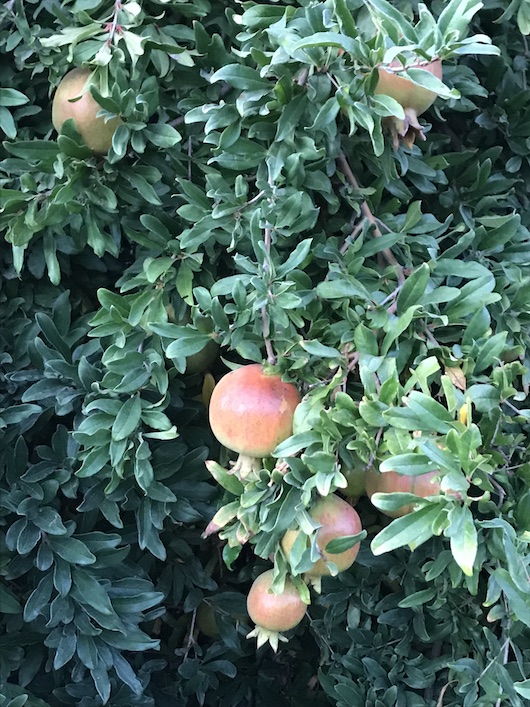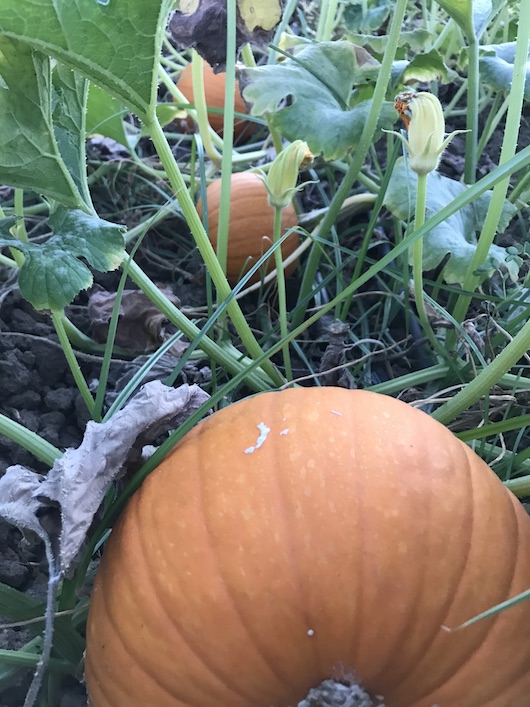
Seems like we may have a great crop of pomegranates, come October and November.
We recently wrote a letter to Governor Newson’s office about two climate change bills introduced into the legislature that have very little funding for agriculture. The bills would enact a bond act in 2020 that the Governor’s office is developing. Here are excerpts from our letter:
I am thankful that increased attention is being given to prevention of and restoration after drought, wildfires and floods. I am a farm owner in Yolo County California, farming along Cache Creek in the Capay Valley. My farm and home have been directly impacted in the last decade by significant wildfires (County Fire, 2018 and Sand Fire, 2019), frightening flooding of Cache Creek, and the impacts of the most recent California drought.
Our multigenerational farm is 450-acres growing certified organic grain, produce, flowers and livestock. We have been in operation since 1985. I am an appointed member of the CDFA Environmental Farming Act Science Advisory Panel (EFA-SAP) One function of this panel is to provide recommendations on the implementation of the Healthy Soils Program and the State Water Efficiency and Enhancement Program. The farm participants in these programs are a diverse group who become involved because investments in soils and water use efficiency are beneficial to the long term sustainability of their businesses. The programs that we support are known to improve water retention in soils, reduce greenhouse gas emissions from farms, sequester carbon in soils, and reduce methane emissions from dairies.
Farms, ranches, dairies and many disadvantaged rural communities are on the front lines of the impacts of climate change. But the risks and challenges faced by mid-scale and small-scale farmers go well beyond the impacts of wild swings in climate — California can feel like a very difficult place to run a farm business, and the economic and regulatory challenges that we face as a group can seem truly existential at times. The work of the EFA-SAP has resulted in grant funds being focused on the small-scale and low-income farming communities that are frequently overlooked because of language or other factors. I do believe that the goals of the upcoming bond would be better realized if the element that includes rural and farming California were strengthened.
Farming and working landscapes provide buffers in terms of wildfire; they can provide drought and river protection if conservation practices are followed; they can provide groundwater recharge and wildlife habitat; they can sequester carbon — there are many ways that farms can mitigate the impacts of climate change. A 2012 study by UC Davis researchers found that an acre of urban land emits 70 times more greenhouse gases than an acre of irrigated cropland. It is imperative that California lead the way by making a significant investment in agricultural solutions to climate change.
The proposals in the bond if I understand them correctly, provide very little funding for agriculture. To my dismay, these proposals do not include any meaningful investment in healthy soils, on-farm water conservation, or other farming practices that create agricultural resiliency in an uncertain future. I know that the competition for cap-and-trade funding is fierce, and that many powerful voices are at the table. We need your help to support California’s biologically based, conservation minded rural communities and farmers.
— Judith Redmond

You aren’t going to see much okra (above) or pumpkins (below) maybe once in your boxes — but we do have a very small planting of each at the farm — here are photos showing their stage of growth on September 1st.

